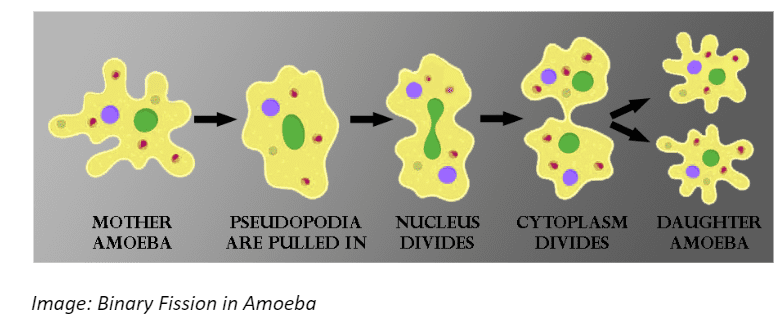NCERT Solutions: How Do Organisms Reproduce Class 10 PDF (FREE Download)






NCERT Solutions for Class 10 Chemistry Chapter 7 How do Organisms Reproduce

 Share
Share























FAQs on NCERT Solutions for Class 10 Chemistry Chapter 7 How do Organisms Reproduce
1. Why is Organisms Reproduction Important?
Reproduction is a biological process through which living creatures give birth to individuals like them. It is a way to maintain the existence of the creatures on this planet. This process maintains the balance and stability in the ecosystem. Also, reproduction maintains the birth and death ratio. A new living creature replaces the old creature by this process.
The species in an ecosystem increases with birth rate, and the ecosystem becomes healthy with species variation. The genes maintain the biological features by transmitting from one generation to another. Reproduction leads us to evolution. Variety in species of an ecosystem is an excellent result of reproduction. Class 10 Science Chapter 7 PDF provides the best expertise in the chapter.
2. What is the Process of Asexual Reproduction?
Asexual reproduction is mainly for lower animals. They don’t have gametes in their reproductive cells. Asexual reproduction does not require two animals. An individual can give birth to another by asexual reproduction. It is a process for single parent creatures such as lower animals and plants and other unicellular organisms.
Asexual reproduction is done by many processes like budding, spore-formation, fragmentation, fission, regeneration, vegetative reproduction, etc. a sexual reproduction mainly follows the cell division process. By this process, two or more identical cells are formed and that cells are formed and that cells transform into new individuals. For all these reasons, asexual reproduction is called uni-potential reproduction.
3. How do organisms reproduce, as stated in How Do Organisms Reproduce Class 10 questions and answers?
In Chapter 7, science class 10, different organisms exhibit different modes of reproduction. Two main categories of reproduction are sexual and asexual. In organisms that exhibit asexual reproduction, the fusion of male and female gametes does not occur. In contrast, in organisms that exhibit sexual reproduction, the fusion of the male and the female gametes occurs. Asexual - fission, fragmentation, vegetative propagation. Sexual reproduction - gamete fusion in humans. class 10 science chapter 7 question answer pdf provides best practices to score well.
4. Where can I get the solutions for class 10, science chapter 7?
The page to download NCERT solutions free of cost is class 10 Science Chapter 7 PDF. Apart from these solutions, you can also post questions to get your queries solved by the experts at Vedantu. Furthermore, you can also avail multiple modules of different topics and subjects easily on the Vedantu site and the app. Class 10 Science ch 7 question answer are curated by experts and are completely reliable.
5. What is the difference between sexual and asexual?
Sexual reproduction requires two parents and results in genetically distinct children. Asexual reproduction requires just one parent and results in children that are characterized by genetic similarity. Both of these are the two types of reproduction observed in organisms. Humans and most animals are characterized by sexual reproduction while plants exhibit asexual reproduction as well as sexual reproduction . Students can also refer to How Do Organisms Reproduce Class 10 questions and answers for better understanding.
6. What do you mean by fission?
In biology, fission refers to the splitting of a single organism into two or more pieces and the regeneration of those parts into distinct creatures that are similar to the original. Fission generally refers to how cells split into separate portions, but it may also apply to how creatures, bodies, populations, or species break into discrete sections. Binary fission and multiple fission are the two forms of fission. The parent cell divides into two halves, known as daughter cells, in binary fission. The organism splits into many daughter cells during multiple fission. chapter 7 Science Class 10 provides best practices to score well.
7. Is reproduction important?
Yes, indeed it is crucial. Reproduction keeps all types of creatures from going extinct. Reproduction is not required for an individual's life processes, but it does aid in population growth. Reproduction is necessary for the evolution of organisms through genetic recombination. Without it, no species can strive to survive and will cease to exist. Hence, it is very crucial for all organisms. You may improve your performance by going to Vedantu's website and looking through their practice modules and solutions. Students can refer to class 10 science ch 7 question answers to get expertise in the chapter.
8. Why is sexual reproduction considered advantageous over asexual reproduction?
Sexual reproduction is advantageous because it creates genetic variation, enhancing adaptability and survival. This variation helps populations better resist diseases and adapt to changing environments. Although more energy and time-consuming, the genetic diversity it provides leads to stronger, more resilient species in the long run.


 Watch Video
Watch Video


